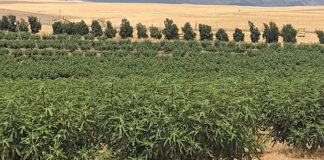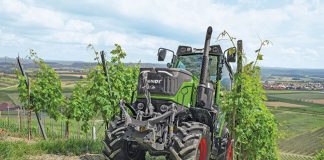
Photo: Bill Kerr
Tomatoes, like potatoes, can offer the farmer handsome rewards. But production costs can be high, and there is no guarantee of covering them in a free market where prices can fluctuate greatly.
I know a fairly large tomato farmer who was doing very well. Then, for three consecutive years his expenses exceeded his income, and he was forced to sell his farm. If he could have been in production for the fourth year, he would have made a big profit, but the bank would no longer support him.
One of the main input costs is the seed itself. Open-pollinated varieties are very cheap, but are not viable.
Hybrid seed, in contrast, is substantially more expensive but well worth the price, as you are assured of far better disease resistance, a higher yield, firmer fruit, longer shelf life, and a higher grading. Dedicated plant breeders in South Africa and across the world are constantly striving to make this crop more profitable for the farmer.
Options
There are so many options in terms of growth types, fruit shape and size that the first-time grower can find it rather confusing. The first decision needs to be the growth type. Some farmers prefer indeterminate or tall growers, which give a bigger yield over a longer period, but also require you to spend a lot of money on poles and wire or twine, as well as on extra labour.
Others prefer determinate types, which require shorter poles and ensure a more concentrated harvest period. ‘Extreme’ determinate types are not supported at all; they are simply left to grow on the ground. Processors usually go for this type, especially where mechanical harvesting takes place. Because these plants are so low on the ground, they can only be planted where there is little or no rain during the growing period.
Size and shape
Your market will determine the size and shape of the tomatoes you plant. South African fresh produce markets prefer round to oblate types of 150g to 180g. Some countries prefer much larger fruit, while others, such as the UK, like smaller fruit.
There is also growing interest in saladette tomatoes, which are longer and cylindrical. I recently retired from breeding vegetables and have instead been using my facility to grow organic crops for select shops. These have included both round and saladette-type tomatoes, and I have seen demand gradually increasing for the saladette types.
Disease resistance
Apart from the market requirements, another key consideration is the disease resistances required for your region.
Generally, the more disease resistances, the greater the seed price. However, if some of the resistances available are not required for your area, it’s pointless paying more for something you don’t need. For example, bacterial wilt and spotted wilt resistance are absolute essentials for some areas, but in my case, I don’t need them, so I have more varieties to choose from and can pay less for the seed.
Some areas, such as those with high humidity and rainfall during the growing season, are simply not suitable for growing tomatoes. In South Africa, most tomatoes are grown in areas with the lowest climatic hazards. Keep this in mind. Don’t try to fight nature; you will always lose.
Bill Kerr is a vegetable specialist and grower.











